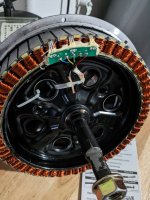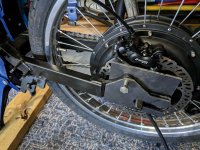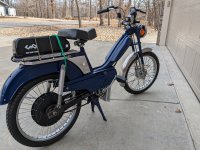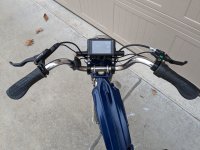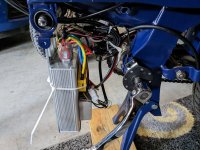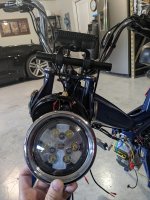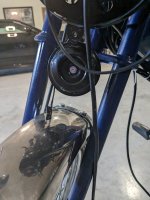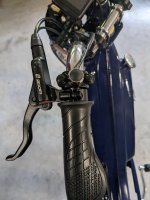They are used to clamp steel cables (like dog tie outs, pole guy wires, etc) together after looping them around something. Sometimes they are called "wire rope clamps"; this is a randomly found amazon link for the type of thing:RoseArk said:Oh I like the clamping torque arms! What are / where do I find those brackets that the clamp bolts run through? I don’t know that I have seen something like that before.
https://www.amazon.com/Cable-Clamps-U-Bolts-Galvanized-Clips/dp/B07CRW455Y
![5191AL+IMDL._AC_[1].jpg 5191AL+IMDL._AC_[1].jpg](https://endless-sphere.com/sphere/data/attachments/189/189237-d28363707f3d7faab000274d4e9bdd9b.jpg)
You'll use only four of the cast parts, and maybe the nuts/washers, not the u-bolt. You'll get a piece of threaded rod and cut four pieces out of it of the length desired if you want to use the existing nuts/washers, or better is to get some good bolts, nuts, flatwashers, and lockwashers (four complete sets).
If your plates are steel, you can also weld a bolt-stop (steel cylinder just big enough for the bolt's diameter) and a thread-receptacle (stack of nuts, etc) to the end of the plate like this:
https://endless-sphere.com/forums/viewtopic.php?p=1737530#p1737530
But the cable clamps work, and require no modifications to use.
I used the welded-on solution because my dropouts are vertical, and I didn't want to risk ever having an issue of loosening hardware causing the clamps to fall off somewhere during a ride (unlikely, but if it can go wrong, it'll probably happen to me, so I try to pick a solution that fails in a way I can recover from :lol: ).


